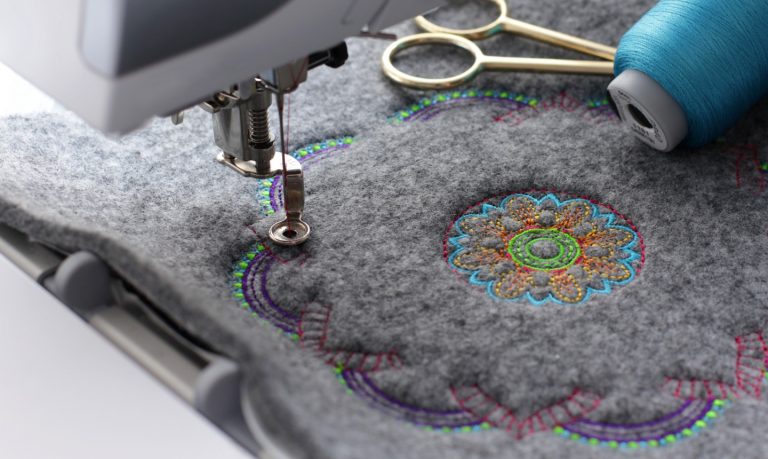Effective Digitizing for Embroidery: Quick Turnaround
Effective Digitizing for Embroidery: Quick Turnaround
Blog Article
Understanding the Embroidery Digitizing Process: Your Ultimate Guide
Embroidery digitizing is a careful craft that calls for precision and experience to equate complex designs right into electronic layouts for device embroidery. As craftsmens begin on this trip to master the needlework digitizing process, a detailed understanding of the essentials sets the foundation for quality.

Comprehending Embroidery Digitizing Essentials
Embroidery digitizing basics create the foundation upon which detailed layouts are translated into machine-readable styles for accurate stitching. This preliminary action in the embroidery digitizing procedure is critical for guaranteeing that the final embroidered product is a faithful representation of the original style. Recognizing embroidery digitizing basics involves grasping essential principles such as stitch types, stitch direction, thickness, padding, and draw payment.
Sew types play a vital role in establishing the aesthetic and textural end result of the embroidered style. By picking the suitable stitch type, whether it be satin, fill, or running stitch, digitizers can attain the wanted impact and boost the general quality of the embroidery. Furthermore, stitch instructions influences the flow and dimension of the design, while thickness identifies the spacing and insurance coverage of the stitches.
Additionally, padding sewing provides security to the style by securing the fabric and preventing distortion throughout the embroidery procedure. Pull payment is an additional necessary factor to consider to neutralize the all-natural propensity of fabric to agreement when stitched. Understanding these embroidery digitizing essentials is fundamental for creating professional-quality embroidered products.
Choosing the Right Digitizing Software Application
Picking the ideal digitizing software is a crucial decision that dramatically influences the effectiveness and high quality of the needlework digitizing procedure. Digitizing for Embroidery. When picking the ideal digitizing software program, it is necessary to think about aspects such as the intricacy of styles you intend to develop, the user-friendliness of the software application, the level of client assistance offered, and the compatibility with your needlework device
There are various digitizing software choices readily available in the market, ranging from fundamental programs for newbies to innovative software for specialist digitizers. Some popular choices consist of Wilcom EmbroideryStudio, Hatch Needlework Software Program, and PulseID. These software program bundles use a vast array of tools and functions to help you develop detailed designs with simplicity.
Prior to making a decision, it is advisable to check out the different software options via free tests or trials to determine which one best suits your requirements. In addition, reading testimonials and seeking recommendations from experienced digitizers can offer valuable insights right into the staminas and weaknesses of each software (Digitizing for Embroidery). By carefully assessing your requirements and contrasting the functions of different digitizing software program, you can make an educated option that boosts your needlework digitizing operations
Digitizing Tools and Techniques

Optimizing Design Setup for Needlework
Understanding the complexities of layout setups is fundamental in attaining optimum cause the embroidery digitizing procedure, structure upon the foundation laid by recognizing digitizing tools Web Site and methods. When enhancing layout settings for needlework, it is necessary to consider variables such as stitch type, thickness, padding, draw settlement, and enrollment. Sew type option affects the overall feel and look of the design, with options like satin, fill, and running stitches providing different appearances and effects. Density describes the spacing and density of stitches, impacting the layout's coverage and toughness. Correct underlay stitching offers stability and stops fabric distortion, especially for complicated layouts or on elastic products. Draw settlement readjusts for textile stretch throughout stitching, making sure exact design replication. Registration setups line up various components of the style properly, preserving total design honesty. By fine-tuning these design setups, embroiderers can boost the top quality and precision of their stitched productions.

Troubleshooting Common Digitizing Issues
When encountering usual digitizing issues throughout the needlework process, it is vital to understand the origin and apply efficient options promptly. One typical trouble is stitch density problems, where stitches may be also thick, triggering the material to tighten, or also sparse, bring about spaces in the design. Changing the stitch density setups in the digitizing software program can assist fix this problem.
An additional frequent challenge is string breaks throughout the embroidery procedure. This can take place because of different factors such as wrong stress settings, boring needles, or utilizing low-grade string. Ensuring appropriate maintenance of the needlework device, consisting of normal needle modifications and tension changes, can lessen the incident of thread breaks.
Additionally, layout enrollment errors can cause misaligned components within the needlework style. Examining the style alignment in the digitizing software program and making needed changes before sewing can aid in avoiding this concern. By attending to these common digitizing issues promptly and effectively, you can make certain a smoother embroidery process and premium ended up items.
Final Thought
In final thought, mastering the needlework digitizing top article process needs a solid understanding of the fundamentals, the appropriate choice of software program, and understanding of tools and strategies. Maximizing style settings and repairing usual digitizing problems are crucial action in guaranteeing top Visit Website quality needlework outcomes. By following these steps vigilantly, one can attain precision and performance in the digitizing process.
Report this page